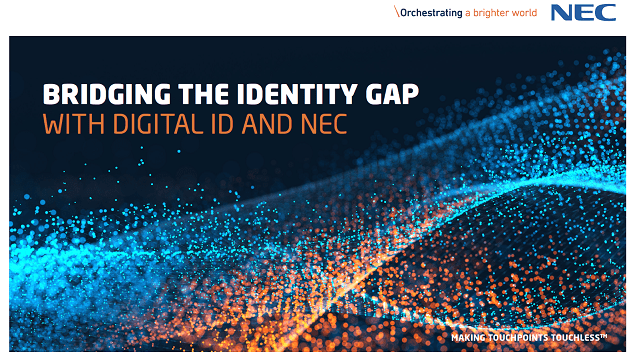This is a guest post by Micah Willbrand, Vice President of Product Development, NEC Corporation of America
If you’re a regular at a local store, chances are that there’s an employee who recognizes you. You might even be on friendly terms, exchanging pleasantries at the checkout. But if the same retailer has an online shop, no one is there to recognize you, and you might be required to enter a password to access your online account with the shop to prove you are who you claim to be.
On the flip side, you might regularly make purchases from a different retailer using an online account that you can easily access with a password manager, and the account might add rewards points for each order – but when you try to shop in one of the retailer’s brick-and-mortar outlets, it might take the cashier some time to confirm your identity and apply points to your profile, if they can do so at all.

This is what NEC calls the “Identity Gap.” It’s the disconnect between who you are online and who you are offline. And it isn’t just present in e-commerce: the Identity Gap trips people up in all kinds of locations, from the bank to the workplace to the airport.
In banking, for example, a customer might be able to perform all kinds of transactions online, with only a username and password required. But that same user can’t walk into a bank branch and start performing transactions by providing their username and password; there, they need a physical bank card and a PIN, at the very least. At the airport, meanwhile, a traveler often goes through a time-consuming and burdensome process of identity verification in order to turn digital tickets ordered online into physical tickets that can be used at the boarding gate.

The fundamental problem that causes the Identity Gap in all of these use cases is the fact that a legitimate user’s online identity is entirely discrete and separate from their identity in the physical world. And in the wake of a pandemic that has accelerated digital transformation, the Identity Gap is only becoming more of a problem. As a result, many decision makers across a range of sectors are beginning to recognize the need for a solution.
What’s needed is a solution that can bridge the Identity Gap by extending a single, unified user identity across the online and offline worlds. Fortunately, today’s mobile and biometrics technologies are capable of facilitating just that, with NEC’s I:Delight platform emerging at the cutting edge of identification innovation. I:Delight takes a hybrid approach to user identity, allowing trusted third parties to maintain their own data about a given end user in specific interactions, while the user retains complete control over their sensitive personal information.
In practice, this means that the user almost always has their own Digital ID on hand, and that third parties can verify its data against their own records in certain scenarios – such as opening a bank account or boarding a plane – without the need for a cumbersome identity verification process in which the user must share paper credentials that disclose more personal information than is needed.
NEC I:Delight is already being used to process passengers at select airports, and will be coming to many more locations soon, within and beyond the air travel sector. It’s time to bridge the Identity Gap and make sure that all of us are easily recognized online and in the physical world.
Learn more about how we can close the Identity Gap with Digital ID by downloading NEC’s new white paper “Bridging the Identity Gap With Digital ID and NEC.”









Follow Us